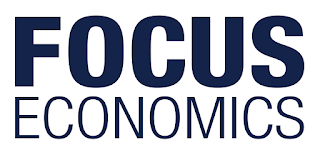Gasoline
Gasoline prices regained some ground at the start of the year and, on 11 January, reformulated blendstock for oxygenate blending (RBOB) gasoline traded at USD 1.55 per gallon. This was up 4.5% from the same day last month, was 0.8% lower on a year-to-date basis, and was down 17.2% from the same day last year. Gasoline prices fell further in late December in line with the fall in global crude oil prices and on weaker-than-normal holiday demand. A report by the EIA showed gasoline demand for the week ending 28 December was the lowest in nearly two years. Moreover, gasoline stocks rose higher in the period, signaling ample supply. Prices, however, have bounced back in anticipation of tighter supply. Prices are expected to pick up later this year as OPEC and its allies trim output in order to boost crude oil prices. FocusEconomics panelists expect gasoline to trade at an average of USD 1.81 per gallon in Q4 2019 and USD 1.71 per gallon in Q4 2020.
Dry Gas
Natural gas prices have retreated over the last month after November’s multi-year high spike. On 11 January, the Henry Hub Natural Gas price was USD 3.10 per one million British thermal units (MMBtu). The price was 29.7% lower than on the same day in the previous month but was up 5.4% on a year-to-date basis. In addition, the price was 0.5% higher than on the corresponding date in 2018. The fall in prices was chiefly due to mild weather in the U.S. over the past month, which dampened heating demand and which is expected to persist in the coming months. Moreover, the previous month’s significant jump in natural gas prices caused utility firms to shift to alternative energy sources such as coal, which further weighed on demand. Some kind of pullback was always to be expected following such a dramatic price increase in November, which likely saw prices run ahead of fundamentals amid speculative demand. Looking ahead, prices are expected to tick up slightly from their current level going forward, supported by a global shift away from coal towards gas, a cleaner non-renewable energy. However, high U.S. supply should contain any price increase. FocusEconomics panelists see the spot price averaging USD 3.14 per MMBtu in Q4 2019, before climbing to USD 3.17 per MMBtu in Q4 2020.
Brent Crude
In January, Brent crude oil prices appear to be recovering following the freefall which began in October and led Brent crude oil prices to hit a one-and-a-half year low by the end of December. On 11 January, oil prices traded at USD 59.1 per barrel, which was 1.1% lower than on the same day last month. Although the benchmark price for global crude oil markets was 16.0% lower than on the same day last year, it was up 16.9% on a year-to-date basis. Thawing relations between China and the United States has fueled hopes that a full-blown trade war between the two superpowers will be avoided, boding well for the global economy. This situation, coupled with the oil production cut announced by OPEC and Russia in early December and effective in January 2019, has supported oil prices so far this year. However, Brent crude oil remains still at low levels due to the collapse in oil prices observed in the October– December period due to widespread concerns of a new global oil glut. The U.S decision to grant waivers to Iranian oil buyers, coupled with a somber global economic outlook and strong oil production by Russia, the OPEC and the United States, negatively impacted oil prices. Looking forward, analysts surveyed by FocusEconomics expect, on average, that the recovery in oil prices will strengthen in the coming months as the oil production cut agreed by OPEC+ will keep the global oil market adequately supplied. However, a potential global economic slowdown and strong oil production will limit the rebound. FocusEconomics panelists see prices averaging USD 69.2 per barrel in Q4 2019 and USD 68.3 per barrel in Q4 2020.
West Texas Intermediate (WTI)
WTI crude oil prices declined sharply in recent weeks and hit an over one-year low of USD 44.5 per barrel on 27 December. Afterwards, however, prices for the black gold started to recover. WTI crude oil prices traded at USD 51.4 per barrel on 11 January, which was down 0.4% from the same day last month. Although the price was down 19.4% from the same day last year, it was 13.9% higher on a year-to-date basis. The price for WTI crude prices plummeted since U.S. President Donald Trump announced waivers for eight countries to continue purchasing Iranian oil in early November. Moreover, the United States continued to pump oil at record levels in recent months, reaching an average of 11.7 million barrels per day in the week ending 4 January. However, recent news that China–U.S. trade talks were progressing, coupled with reduced supply by OPEC+ members, boosted prices since the start of the year. In a sign that the U.S. economy could be cooling, U.S. crude oil stockpiles decreased less than expected in the week to 4 January, while inventories of refined products surged in the same period. Looking forward, WTI oil prices are likely to rise from current levels as the oil cut production by OPEC+ will reduce global oil supply. Robust U.S. shale production, however, will limit any sharp upward movement. For Q4 2019, analysts expect prices to average USD 62.2 per barrel, before increasing slightly in Q4 2020 to USD 60.9 per barrel.





